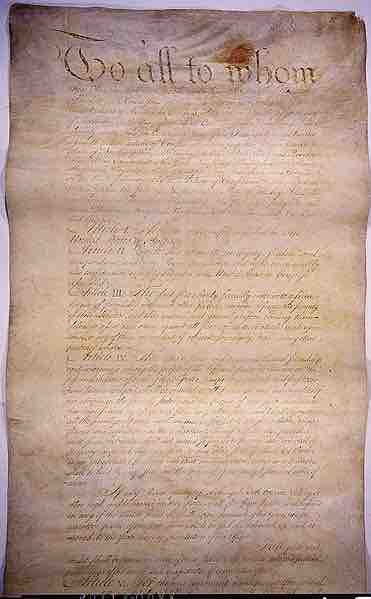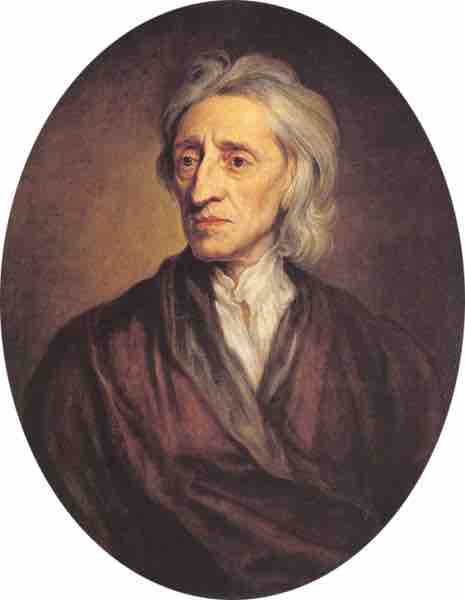The Bill of Rights
The Bill of Rights is the collective name for the first ten amendments of the United States Constitution. It is a series of limitations on the power of the U.S. federal government, protecting the natural rights of liberty and property including freedom of religion, freedom of speech, a free press, free assembly, and free association, as well as the right to keep and bear arms . In federal criminal cases, the Bill of Rights requires indictment by a grand jury for any capital or "infamous crime", guarantees a speedy, public trial with an impartial jury composed of members of the state or judicial district in which the crime occurred, and prohibits double jeopardy. In addition, the Bill of Rights reserves for the people any rights not specifically mentioned in the Constitution and reserves all powers not specifically granted to the federal government to the people or the States.
Bill of Rights
The First Amendment rights of free speech, freedom of association, and freedom of petition protect lobbying, including grassroots lobbying.
Articles of Confederation
Prior to the acceptance and implementation of the United States Constitution, the original 13 colonies followed the stipulations and agreements set forth in the Articles of Confederation, created by the Second Continental Congress and ratified in 1781. The Articles of Confederation established the United States of America as a confederation of sovereign states and served as its first constitution . The national government that operated under the Articles of Confederation was too weak however to adequately regulate the various conflicts that arose between the states. The Philadelphia Convention set out to correct weaknesses inherent in the Articles of Confederation. The newly constituted Federal government included a strong executive branch, a stronger legislative branch and an independent judiciary.

Articles of Confederation
The Articles of Confederation, ratified in 1781. This was the format for the United States government until the Constitution.
The Philadelphia Convention
Delegates arrived at the Philadelphia Convention on September 12, 1787, to debate whether to include a Bill of Rights in the body of the U.S. Constitution. An agreement to create the Bill of Rights helped secure ratification of the Constitution itself. Ideological conflict between Federalists and anti-Federalists threatened the final ratification of the new national Constitution. Thus, the Bill addressed the concerns of some of the Constitution's influential opponents, who argued that the Constitution should not be ratified because it failed to protect the fundamental principles of human liberty.
Ideas Behind the Bill of Rights
To some degree, the Bill of Rights incorporated the ideas of John Locke, who argued in his 1689 work, Two Treatises of Government, that civil society was created for the protection of property . Locke also advanced the notion that each individual is free and equal in the state of nature. He expounded on the idea of natural rights that are inherent to all individuals.

John Locke
Author of Two Treatises of Government (1689) which argued that civil society was created for the protection of property. This piece was influential in the creation of the Bill of Rights.
Locke's political theory was founded on social contract theory. Unlike Thomas Hobbes, Locke believed that human nature is characterized by reason and tolerance. Like Hobbes, Locke believed that human nature allowed men to be selfish. Like Hobbes, Locke assumed that the sole right to defend in the state of nature was not enough, so people established a civil society to resolve conflicts in a civil way with help from government in a state of society. However, Locke never refers to Hobbes by name and may instead have been responding to other writers of the day. Locke also advocated governmental separation of powers and believed that revolution is not only a right but an obligation in some circumstances. These ideas would come to have profound influence on the Declaration of Independence and the Constitution of the United States.
Adoption and Ramification
As the author of the amendments, James Madison submitted his proposal for the ten amendments on June 8, 1789. Madison's proposal was reworked and adopted as seventeen amendments by the House of Representatives on August 21, 1789, and forwarded to the Senate on August 24. The House version rejected Madison's idea to incorporate the amendments into the body of the Constitution and instead submitted its seventeen articles to be attached separately "in addition to, and amendment of, the Constitution. " The Senate edited the House's proposed seventeen amendments and adopted a version with twelve amendments. The two versions went to the Joint Committee and the Senate's version became the one adopted by joint resolution of Congress on September 25, 1789, to be forwarded to the states on September 28.
Legacy of the Bill of Rights
The Bill of Rights plays a key role in American law and government, and remains a vital symbol of the freedoms and culture of the nation. One of the first fourteen copies of the Bill of Rights is on public display at the National Archives in Washington, D.C. In 1991, the Bill of Rights toured the country in honor of its bicentennial, visiting the capitals of all fifty states.